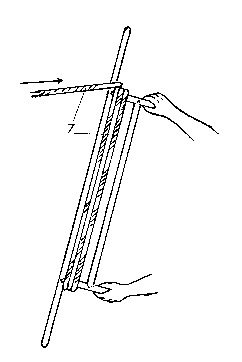Some of the information on this Web page has been provided by external sources. The Government of Canada is not responsible for the accuracy, reliability or currency of the information supplied by external sources. Users wishing to rely upon this information should consult directly with the source of the information. Content provided by external sources is not subject to official languages, privacy and accessibility requirements.
Any discrepancies in the text and image of the Claims and Abstract are due to differing posting times. Text of the Claims and Abstract are posted:
| (12) Patent Application: | (11) CA 2116092 |
|---|---|
| (54) English Title: | SPOOL FOR LIFE-LINE |
| (54) French Title: | TAMBOUR D'ENROULEMENT POUR CORDE DE SECURITE |
| Status: | Deemed Abandoned and Beyond the Period of Reinstatement - Pending Response to Notice of Disregarded Communication |
| (51) International Patent Classification (IPC): |
|
|---|---|
| (72) Inventors : |
|
| (73) Owners : |
|
| (71) Applicants : | |
| (74) Agent: | |
| (74) Associate agent: | |
| (45) Issued: | |
| (22) Filed Date: | 1994-02-21 |
| (41) Open to Public Inspection: | 1995-08-22 |
| Examination requested: | 1994-02-21 |
| Availability of licence: | N/A |
| Dedicated to the Public: | N/A |
| (25) Language of filing: | English |
| Patent Cooperation Treaty (PCT): | No |
|---|
| (30) Application Priority Data: | None |
|---|
This invention relates to a life-line spool. The life-line has always played an
important role in life-saving. To manage large quantities of line during transport or
during rescue work, a line reel, a line box or a line bag is used. I have found that a
life-line spool is an alternative to the box, the bag or to the reel. With this spool, the
life-line is easy to transport, easily uncoiled when pulled out on the rescue and can
be just as easily coiled back on the spool during or after the rescue. The spool is
made of one long bar with two smaller parallel bars fixed perpendicular to it so as
to divide the long bar in three sections. The two parallel bars serve both as handles
and as line support-bars. The center section of the long bar serve as the frame of the
spool and the two end section serve as line retainer-bars to hold the line so the coils
of line do not fall off the line support-bars. To coil the life-line, the line is tied to
one of the support-bars; the spool is held by the end of the two support-bars which
serve as handles; the life-line is coiled around the support-bars by executing a long
circular movement of the spool from side to side and by catching the line with the
retainer-bars which extend pass both handles. To carry the life-line, the spool is
held with the line support-bars pointing up so the line does not fall off the spool.
To unwind the life-line, the spool is held by the long frame-bar with the two
parallel line support-bar pointing in the direction the line needs to be pulled out.
When the line is pulled, it freely uncoils from the spool. To stop and to recoil the
line, the spool is simply reversed and held by the two handles.
Note: Claims are shown in the official language in which they were submitted.
Note: Descriptions are shown in the official language in which they were submitted.

2024-08-01:As part of the Next Generation Patents (NGP) transition, the Canadian Patents Database (CPD) now contains a more detailed Event History, which replicates the Event Log of our new back-office solution.
Please note that "Inactive:" events refers to events no longer in use in our new back-office solution.
For a clearer understanding of the status of the application/patent presented on this page, the site Disclaimer , as well as the definitions for Patent , Event History , Maintenance Fee and Payment History should be consulted.
| Description | Date |
|---|---|
| Inactive: IPC from MCD | 2006-03-11 |
| Inactive: IPC from MCD | 2006-03-11 |
| Application Not Reinstated by Deadline | 1996-08-21 |
| Time Limit for Reversal Expired | 1996-08-21 |
| Inactive: Adhoc Request Documented | 1996-02-21 |
| Deemed Abandoned - Failure to Respond to Maintenance Fee Notice | 1996-02-21 |
| Application Published (Open to Public Inspection) | 1995-08-22 |
| All Requirements for Examination Determined Compliant | 1994-02-21 |
| Request for Examination Requirements Determined Compliant | 1994-02-21 |
| Abandonment Date | Reason | Reinstatement Date |
|---|---|---|
| 1996-02-21 |
Note: Records showing the ownership history in alphabetical order.
| Current Owners on Record |
|---|
| JEAN NOWLAN |
| Past Owners on Record |
|---|
| None |